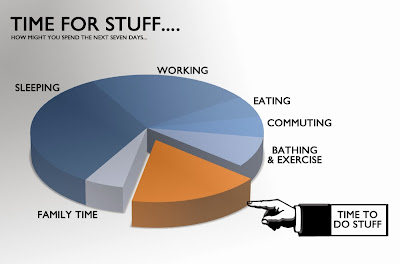Making Time

Time. It's precious. We all know that and yet many of us manage to find a way to waste it. We manage to find things to do that cost us time but give little gain. And we don't have to travel far from home to find those timewasting opportunities. Indeed, many of them are in our own homes. The TV, the Xbox, the internet. You see, the attractions of modern life make it so easy for us to waste our time, to fill large chunks of our leisure time with nothing in particular but in a way that makes it seem like we're having fun. Now, I'm no time management angel. I have all the same time management issues as the next man, but the fact is that I know that how I spend my time is a choice. I can choose to relax and spend my time scratching my backside whilst watching old John Wayne films, or I can choose to do smoothing that might be more likely to improve my life, or to improve the live of others. Maybe that would include spending time on self development or learning a new ski...











